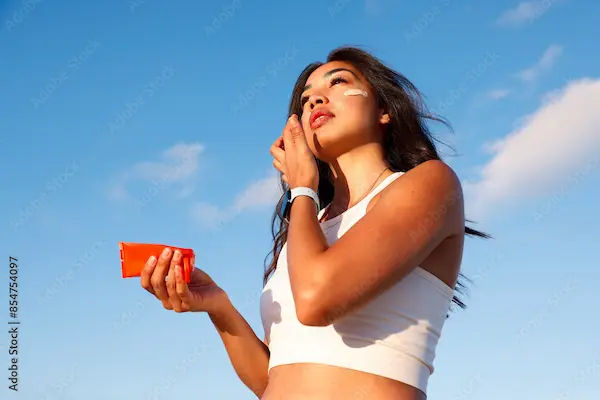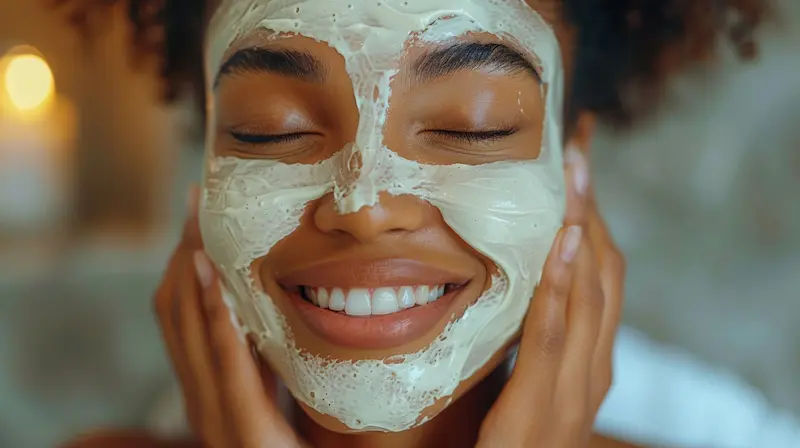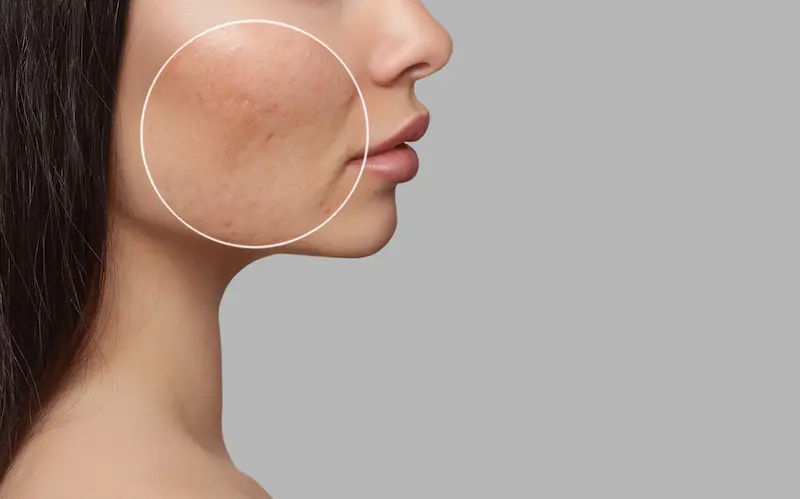Guide to Monsoon Skincare Tips
Know about the monsoon skincare, why special care, skin care procedure routine, do’s and donts, makeup tips and skincare for different skin types.

Written by Dr. Rohinipriyanka Pondugula
Reviewed by Dr. Shaik Abdul Kalam MD (Physician)
Last updated on 8th Oct, 2025

Introduction
The pitter-patter of rain brings a sense of relief from the scorching summer heat, but for your skin, the monsoon ushers in a unique set of challenges. The increased humidity, coupled with pollutants and sweat, can disrupt your skin's balance, leading to breakouts, infections, and an overall dull complexion. Many mistakenly believe that since the air is wet, skincare can take a backseat—this is a common myth. Effective monsoon skincare is not about using more products, but about using the right ones. This comprehensive guide will walk you through everything you need to know to adapt your routine for the rainy season. We'll cover a simplified yet powerful skincare regimen, tackle specific issues like fungal acne, provide tips for different skin types, and highlight the crucial role of diet. Get ready to embrace the rains with healthy, radiant skin that defies the gloomy weather.
Why Your Skin Needs Special Care During Monsoon
It is needed for the following reasons:
The Double-Edged Sword of Humidity
High humidity during the monsoon means the air is saturated with water vapour. While this can be beneficial for dry
skin types, for most, it's a double-edged sword. The moist air makes it harder for sweat to evaporate from your skin's
surface. This trapped sweat mixes with oil, dirt, and pollutants, creating a clogged, sticky environment. This is the
perfect breeding ground for bacteria and fungi, leading to increased acne and other infections. Furthermore, the
constant dampness can weaken the skin's barrier over time, making it more susceptible to irritation.
Common Monsoon Skin Woes (Acne, Fungal Infections, Dullness)
The unique environment of the monsoon season directly contributes to several specific skin issues:
- Acne Breakouts: Clogged pores from excess oil, sweat, and humidity are the primary cause. This can manifest as
whiteheads, blackheads, or painful cystic acne. - Fungal Infections: Conditions like Tinea Versicolor (characterised by white or brown patches on the skin) and
ringworm thrive in warm, moist areas like the armpits, groin, and under the breasts. - Dullness and Lacklustre Skin: The layer of dead skin cells, grime, and moisture can prevent light from reflecting off
your skin evenly, resulting in a dull, tired appearance.
The Monsoon-Proof Skincare Routine: A Step-by-Step Guide
Step 1: Deep Yet Gentle Cleansing
Cleansing is the cornerstone of effective monsoon skincare. The goal is to remove impurities without stripping the skin
of its natural oils. Opt for a gentle, foaming, or gel-based cleanser. If you wear makeup or sunscreen, always start with
an oil-free micellar water or a cleansing balm to break it down, followed by your water-based cleanser. Washing your
face 2-3 times a day is sufficient; overwashing can trigger excess oil production.
Step 2: Toning to Restore pH Balance
A good toner does more than just remove last traces of dirt. After cleansing, your skin's pH is slightly alkaline. A toner
helps restore its natural acidic pH (around 5.5), which is crucial for a healthy skin barrier. Look for alcohol-free toners
with ingredients like rose water, witch hazel, or niacinamide, which soothe and prep the skin for better absorption of
subsequent products.
Step 3: The Lightweight Moisturiser Rule
This is the most common mistake people make—skipping moisturizer because the air feels humid. However, humidity
hydrates the air, not your skin. You still need a moisturizer to seal in hydration and protect your barrier. The key is to
switch to a lightweight, oil-free, non-comedogenic formula. Gel-based or water-based moisturisers with hyaluronic acid
are excellent choices as they provide hydration without feeling heavy or greasy.
Step 4: Non-Negotiable Sunscreen (Yes, Even When It's Cloudy!)
UVA rays, which cause ageing and pigmentation, can penetrate clouds and glass. Therefore, sunscreen is absolutely
non-negotiable, regardless of the weather. Choose a broad-spectrum sunscreen with an SPF of 30 or higher. For the
monsoon, a matte-finish or gel-based sunscreen is ideal as it won't feel sticky under the humid conditions. Reapply every
3-4 hours if you are spending time outdoors.
Advanced Monsoon Skincare Strategies
The strategies include:
Exfoliation: How Often and What Type?
Exfoliation is vital to slough off dead skin cells and prevent clogged pores. However, over-exfoliation can damage your
skin barrier, especially in the humid monsoon. Limit chemical exfoliation (AHAs like glycolic acid or BHAs like
salicylic acid) to 1-2 times a week. BHAs are particularly beneficial for oily and acne-prone skin as they penetrate deep into the pores. Avoid harsh physical scrubs that can cause micro-tears.
The Power of Serums: Hydrating vs. Anti-Acne
Serums are concentrated treatments that address specific concerns. For the monsoon, two types are particularly useful:
- Hydrating Serums: Even in humidity, your skin can be dehydrated. A serum with Hyaluronic Acid draws moisture into
the skin, keeping it plump. - Anti-Acne Serums: A serum with Niacinamide or Salicylic Acid can help regulate sebum production and keep
breakouts at bay.
Masking for Monsoon Glow
Incorporate a clay mask once a week to deep clean your pores and absorb excess oil. A kaolin or bentonite clay mask is
excellent for pulling out impurities. Follow up with a soothing, hydrating mask containing aloe vera or cucumber to
calm the skin. This one-two punch is a great way to maintain a healthy monsoon skincare balance.
Monsoon Skincare for Different Skin Types
The monsoon skincare for different skin types includes:
Oily and Acne-Prone Skin
Focus on oil-control and keeping pores clear. Use a BHA-based cleanser or toner. Your moisturiser must be oil-free.
Look for products labelled "non-comedogenic." If you experience persistent, painful acne, it might be more than just
surface-level clogging. If your breakouts do not improve with an over-the-counter skincare routine for humid weather,
consult a dermatologist online with Apollo24|7 for a personalised treatment plan.
Dry Skin
Humidity can be a blessing, but don't get complacent. You may not need your heavy winter creams, but don't skip
moisturiser altogether. Opt for a light lotion or a cream-gel hybrid that contains ceramides to support your skin barrier.
Combination Skin
The classic T-zone oily, cheeks dry scenario requires a balanced approach. You can use a gentle cleanser for the whole
face and then apply a lightweight moisturiser all over. For the oilier parts (forehead, nose, chin), you can dab a little
mattifying powder or use a more astringent toner just in that area.
Sensitive Skin
Stick to a minimal routine with fragrance-free and hypoallergenic products. The monsoon can bring allergens, so patch-
test any new product. Soothing ingredients like centella asiatica (cica) and oat extract are your best friends. If you
notice unusual redness or rashes, it could be an allergic reaction. If your condition does not improve after trying these
methods, book a physical visit to a doctor with Apollo24|7 to identify the trigger.
Monsoon Beauty and Makeup Tips
Heavy foundations can feel suffocating. Switch to a tinted moisturiser, BB cream, or a lightweight mineral powder
foundation. Use waterproof mascara and eyeliner to avoid smudging. Always blot your face with tissue paper before
touching up makeup to avoid caking product onto oily skin. The key is to aim for a fresh, dewy look rather than a full-
coverage matte finish.
Diet and Hydration: The Internal Skincare Routine
What you eat reflects on your skin. Drink plenty of water throughout the day to flush out toxins, even if you don't feel
as thirsty as in summer. Include antioxidants in your diet through fruits like berries, pomegranates, and vegetables.
Avoid excessive oily, spicy, and processed foods that can trigger inflammation and acne. Herbal teas like green tea can also be beneficial.
What to Avoid: Monsoon Skincare Don'ts
- DON'T use heavy, oil-based products.
- DON'T leave wet clothes on for long; change immediately if you get drenched to prevent fungal growth.
- DON'T touch your face frequently with unwashed hands.
- DON'T share towels or personal items.
- DON'T skip sunscreen.
Conclusion
Navigating the monsoon season doesn't have to be a battle for your skin. By understanding the environmental shifts and
adapting your routine accordingly, you can maintain a healthy, glowing complexion all season long. The core principles are simplicity, consistency, and choosing the right products for the humidity. Remember to listen to your skin—it will tell you what it needs. Embrace a gentle cleansing routine, never skip moisturiser and sunscreen, and support your skin health with a balanced diet. If you encounter persistent problems like severe acne or unexplained rashes, don't hesitate to seek professional help. Here's to enjoying the refreshing rains with confident, radiant skin!
More articles from Skin Care
Frequently Asked Questions
1. Can I skip moisturiser during the monsoon if my skin feels oily?
No, you should not skip moisturiser. Humidity hydrates the air, not your skin. Skipping moisturiser can signal your skin to produce even more oil to compensate for the perceived dryness. Instead, switch to a lightweight, gel-based, or oil-free moisturiser.
2. What is the best way to prevent fungal acne in the monsoon?
Fungal acne (Malassezia folliculitis) thrives on oil and humidity. To prevent it, use anti-dandruff shampoos with ketoconazole or selenium sulfide as a body wash once or twice a week, wear loose, breathable cotton clothes, and change out of sweaty or wet clothes immediately. Using products with tea tree oil can also help.
3. How often should I exfoliate my skin in the rainy season?
Limit exfoliation to 1-2 times per week. Over-exfoliating can compromise your skin barrier, making it more vulnerable to irritation and infections. Chemical exfoliants (AHAs/BHAs) are generally gentler and more effective than physical scrubs.
4. I have dry skin. Do I still need to change my skincare routine for the monsoon?
Yes, but the change is less drastic. You can switch from a heavy cream to a lighter lotion or cream-based moisturiser. The goal is to provide adequate hydration without feeling greasy. The increased ambient humidity might actually benefit your dry skin.
5. Are DIY face packs good for monsoon skincare?
Yes, simple DIY packs can be beneficial. A multani mitti (Fuller's earth) and rose water pack is excellent for deep cleansing and oil control. A besan (gram flour) and turmeric pack can help brighten the skin. However, always patch-test first, especially if you have sensitive skin.




